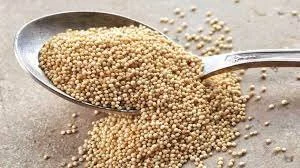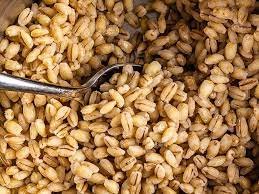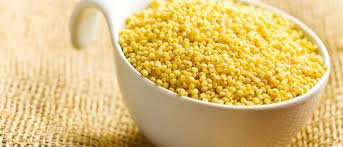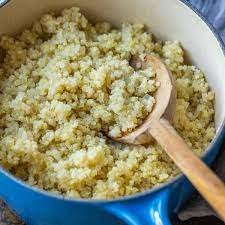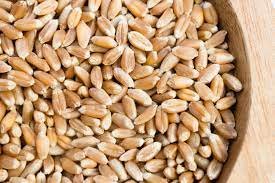Strengthen Your Spleen with Whole Grains
What is the function of the spleen in the body?
The spleen is a major organ in your immune system. This means that it fights off infections and disease by filtering the blood to remove old or damaged blood cells. Additionally, the spleen maintains your body’s fluid balance and facilitates the absorption of fats from food. To keep your spleen healthy and working properly, try to include fruits and vegetables, and whole grains in your diet.
In TCM, the spleen is a site of production for qi, blood, and fluids in the body, which are vital substances of life. After digestion, the spleen and stomach transport nutrients upwards towards the lung and heart which then generate qi and convert nutrients to blood so that it can enter the circulatory system. When spleen qi is weak, you may be more prone to bruising and may feel fatigued overall.
TOP 10 Whole Grains to Strengthen the Spleen
1. Amaranth
Amaranth is sweet and nutty in flavor and a bit crunchy. It is considered an ancient grain because it has been cultivated for over 8,000 years. It is a small tan-colored grain that can be cooked and used like rice or oats to make porridge. Amaranth can also be found in stores in flour form. You can use it in place of all-purpose flour for baked treats! And it's gluten-free!
2. Oats
Oats are essentially the edible seed of oat grass. They are quite bland in flavor with some earthy notes. Since they absorb so much water, they will absorb whatever liquid you cook it in and take on that flavor. You can make a quick bowl of oatmeal for breakfast for a nutritious and tasty meal. Other ideas include baked oats or homemade granola!
3. Barley
Like oats, barley is a cereal grain that is available as hulled or pearled barley. Hulled barley has the bran and germ of the grain still intact while pearled barley has neither. Because of this, hulled barley contains more vitamins and minerals. Barley has a mild, slightly nutty taste with a chewy texture. It can be easily added to your soups and stews! Just keep in mind that it can expand to almost triple its volume once it’s cooked.
4. Brown rice
Brown rice is essentially white rice but with the bran, germ, and endosperm still intact. There is less processing involved which maintains a lot of its nutrients. It tastes earthy, nutty, and chewy. You can use it anywhere you usually use white rice! If you’re not used to the taste of just brown rice, try cooking a mix of white and brown rice. You can also find brown rice flour in stores and use it in any gluten-free baked goods.
5. Millet
Millet is also gluten-free but there are many different kinds. Some include pearl millet, foxtail millet, finger millet, and sorghum millet. Like oats, they are bland in flavor and can take on whatever flavor you cook them with. Millet is yellow in color and has a corn-like flavor, is slightly sweet and nutty. It also has a naturally bitter-tasting coating so make sure to thoroughly wash the millet before cooking. It also expands a ton when cooked. Millet is delicious in porridge, and I have many recipes on the blog! It is also delicious in a pilaf by cooking it in a broth with a bunch of spices.
6. Quinoa
Quinoa comes from the same family as amaranth. It is highly nutritious and is considered a complete protein. It can come in 3 different colors: white, red, and black. Its flavor is described as nutty, earthy, and similar to brown rice. It is fluffy like white rice but the texture is a bit chewy and crunchy. Similarly, it can be used in stews, soups, pilafs, and casseroles.
7. Cornmeal
Cornmeal is made from ground field corn. Cornmeal can range from fine to coarse texture. Since it is made from corn, it has a mild corn flavor but also takes on other flavors really well when cooked. It is often used to make polenta or grits, a type of hot cornmeal porridge. Try adding cornmeal when making porridge or congee for a boost in folate, iron, and vitamin B.
8. Whole Wheat
Everyone knows what whole wheat is. It’s a super common whole-grain high-fiber substitute for all-purpose flour and white bread. Like brown rice, the whole bran, germ, and endosperm of the grain are intact which gives it a nutty flavor. However, wheat contains gluten. It may also taste slightly bitter to some people. Wheat usually isn’t consumed in its grain form but in its flour form and added to recipes that require flour. It is dark brown in color before it is milled into fine flour.
9. Rye
Rye has a very dark color and is closely related to wheat and barley. It contains gluten and tastes bitter, sweet, and tangy. It also has a very chewy texture when cooked. Rye can be cooked like rice by boiling and it is commonly used in its flour form in bread and crackers. Rye tends to be a very filling grain so it can actually help to regulate appetite.
10. Spelt
Spelt is brown in color. It is related to wheat, barley, and rye and is not gluten-free. Although Similar to wheat, it has a stronger husk which is what makes it taste even nuttier than wheat. Spelt can be boiled like rice, but it is popularly used in its flour form in baked goods or pasta. It has a light texture which makes it great for baking and it won’t make your cookies, bread, or cakes dense.
